Introduction
Over 10,000 species of birds exist across the globe, and around 1,000 extinct species have been discovered. While most animals on Earth are marine or terrestrial, these creatures of the air continue to dazzle us with their incredible power of flight. In addition, many of the birds we see in our backyards have unique names and characteristics foreign to the human experience. Discover 14 birds that start with the letter W and find out what they look like.
14 Birds That Start With W
Some of the birds that begin with the letter W are subspecies of other bird groups, and others form the categories that these subspecies fall into. In addition, common names of certain birds starting with W derive from their appearance, such as the white-chinned thrust, whose chin appears white compared to its primarily gray plumage. Below lists 14 birds that start with W and the fastest, largest, and smallest birds in this category.
White-tailed hawk
The white-tailed hawk measures around 21 inches in length with a wingspan of four feet. The species also weighs between two and three pounds, on average. The coloration of the species mainly appears dark gray with red patches on the shoulders. In addition, the white tail of the white-tailed hawk inspires its common name. Habitats of the white-tailed hawk include grasslands, prairies, savannas, or any other open plain. The distribution of this bird species ranges from the southern United States to the continent of South America.

White-tailed hawks have a wingspan that may exceed four feet in length!
©iStock.com/neil bowman
Wild Turkey
A staple of American life and celebration, the wild turkey is native to the United States and some portions of northern Mexico. One interesting fact about wild turkeys is that they are the largest type of gamebird in North America. The wingspan of the wild turkey measures around five feet long, and it weighs a maximum of 20 pounds. Wild turkey feathers may appear bronze, green, or gold and are iridescent, shining in the light. In addition, the wild turkey acts as the mascot of the American Thanksgiving holiday and is served as the main entrée at Thanksgiving dinners across the country.

The wild turkey is the largest gamebird in North America and is served at Thanksgiving.
©iStock.com/Robert Winkler
Wilson’s Plover
Wilson’s plover is a bird native to the Western Hemisphere and has an appearance marked by brown feathers and a white throat and underbelly. The range of Wilson’s plover has shrunk significantly since the 1950s. While the species once lived in the states of New Jersey and Maryland, its northernmost nesting area lies in Virginia. In addition, the bird is considered endangered in Virginia and threatened in South Carolina. Furthermore, the species migrates south during winter and may head as far as Brazil. Due to its unstable population numbers, humans should be careful to leave Wilson’s plover individuals unbothered.
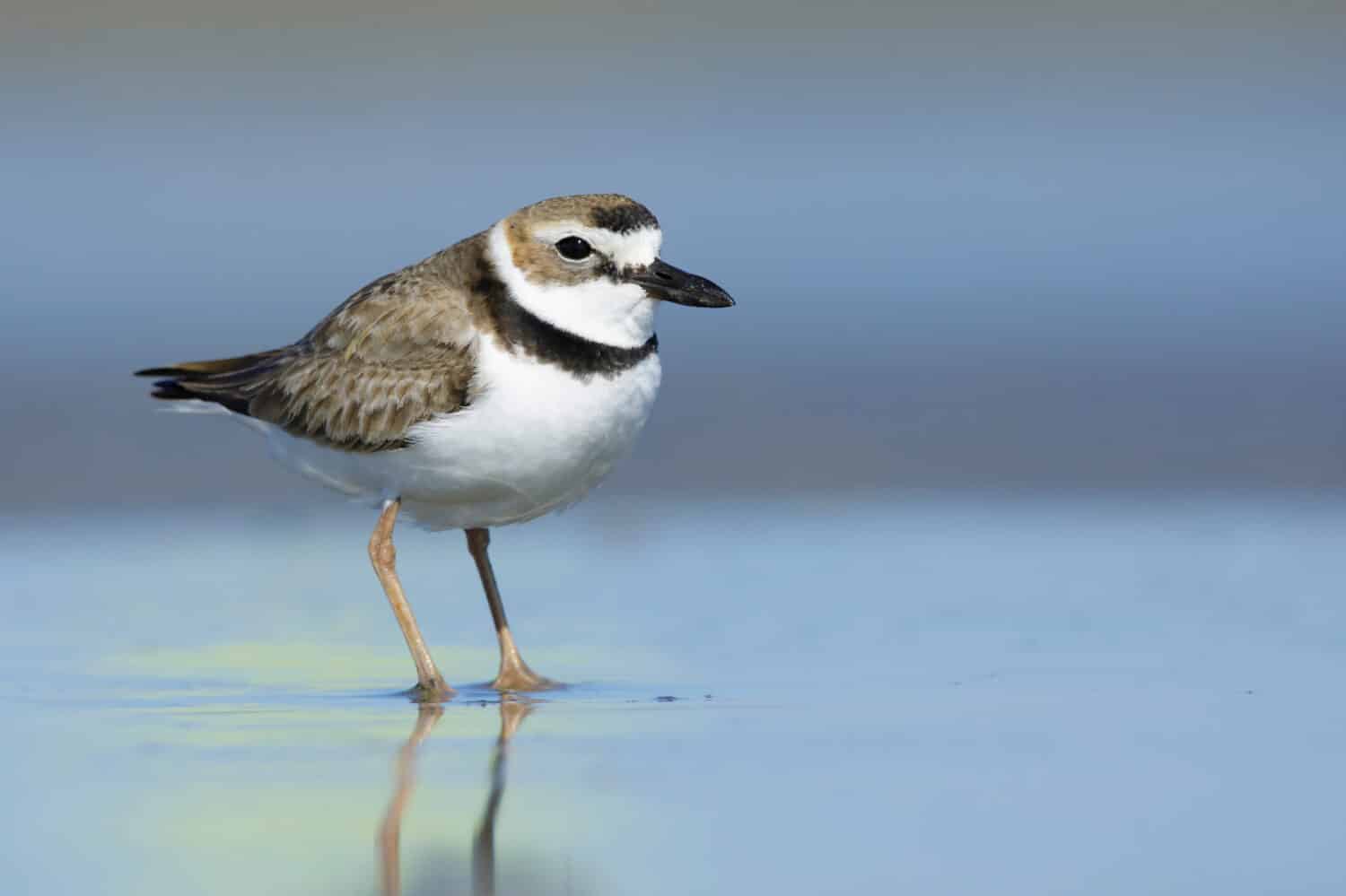
Wilson’s plover is a migratory bird that travels as far south as Brazil during winter.
©Agami Photo Agency/Shutterstock.com
Wood Duck
The wood duck displays an incredibly vibrant coloration, characterized by bright red eyes and a purple and green crest. In addition, several white lines mark the duck’s body, making it easily recognizable. However, these vibrant colors mainly mark the males of this species. Female wood ducks have a coloration appearing brown or gray. In the United States, wood ducks reside along the Pacific and Atlantic coasts and in the Southeast near the Gulf of Mexico. Habitats of the wood duck include lakes, marshes, and rivers, as ducks prefer wet environments with ample vegetation.
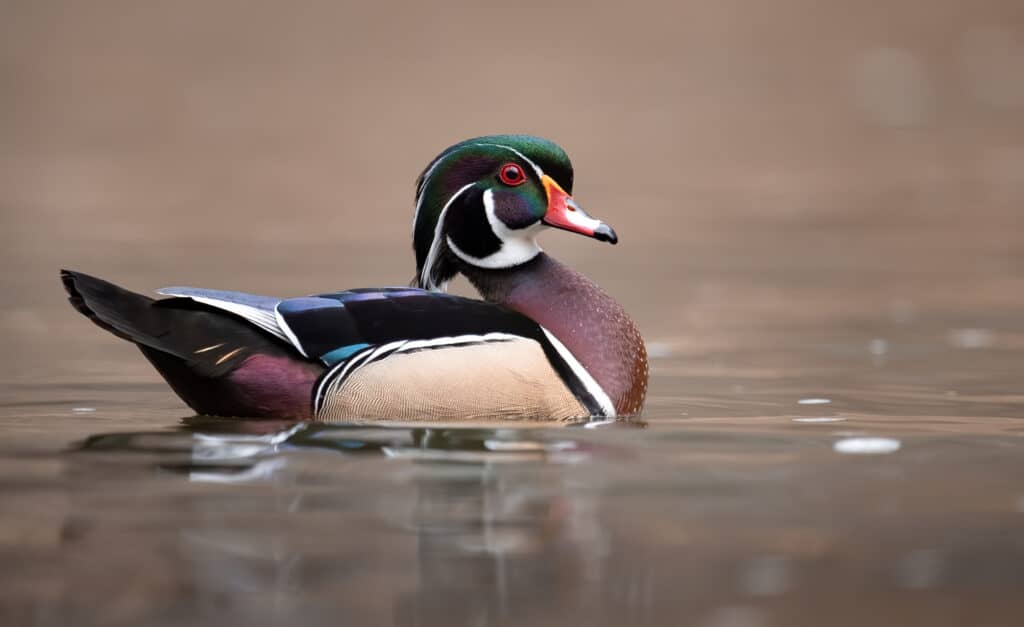
The wood duck’s appearance features a variety of vibrant colors.
©Harry Collins Photography/Shutterstock.com
White-tailed Rubythroat
The white-tailed rubythroat may also be called the Himalayan rubythroat or Chinese rubythroat, as this bird defines three subspecies. The white-tailed rubythroat’s distribution ranges from Myanmar to Afghanistan and its habitat includes the Himalayan Mountains, where Mount Everest, the tallest mountain on Earth, is found.
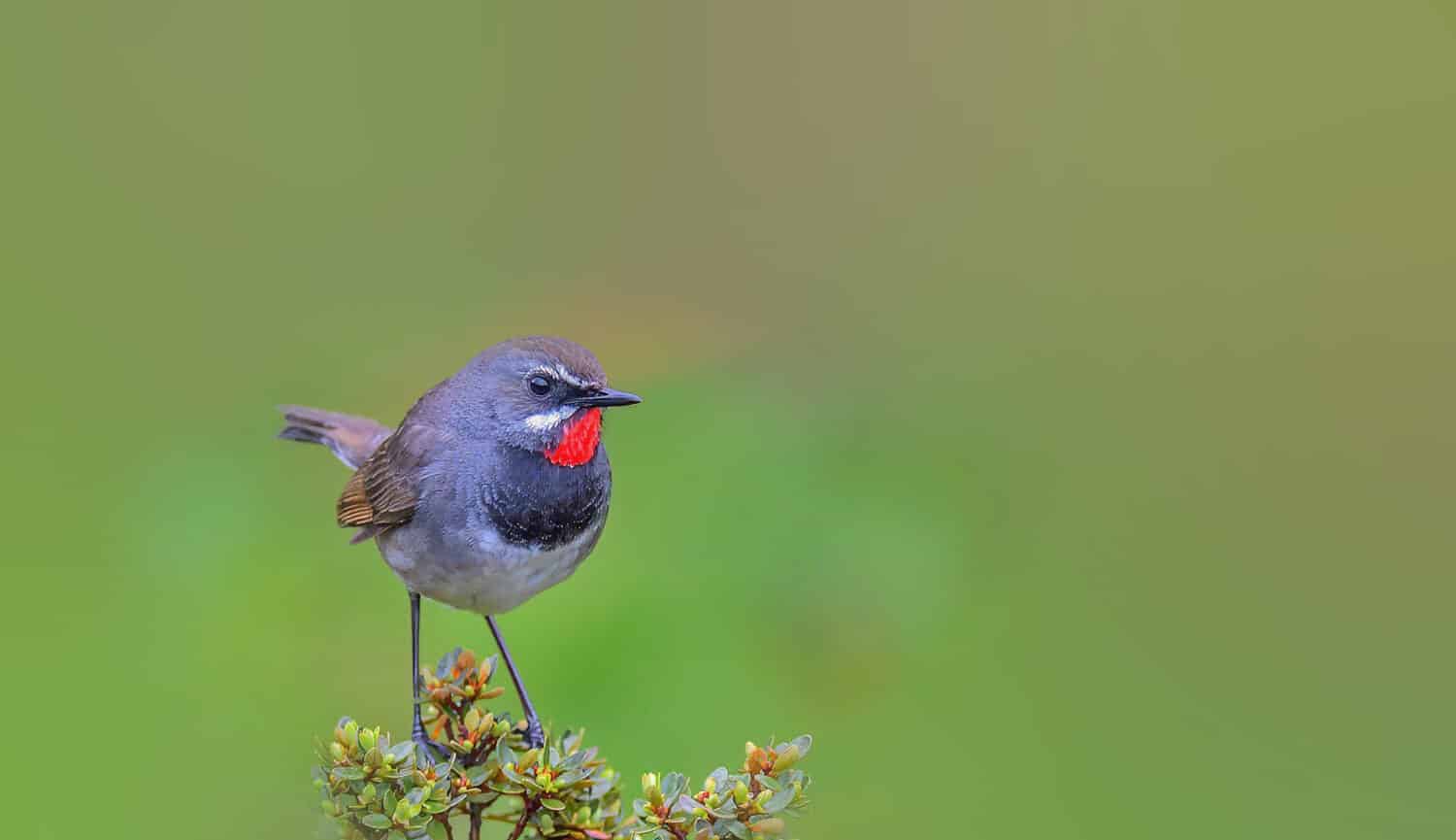
Displayed on the white-throated rubytail is a striking red-colored throat and beautiful gray plumage.
©Wang LiQiang/Shutterstock.com
Western Scrub Jay
The western scrub jay, also commonly referred to as the California scrub jay, is a non-migratory bird whose range extends from the state of Washington down to Mexico. Habitats of the western scrub jay include open wooded areas near the coast, canyons, and scrub found in deserts or mountains. The coloration of the western scrub jay primarily appears blue and gray with a white throat and hints of brown on its back. The wingspan of this species measures around 15 inches, and its total length averages 11.5 inches.
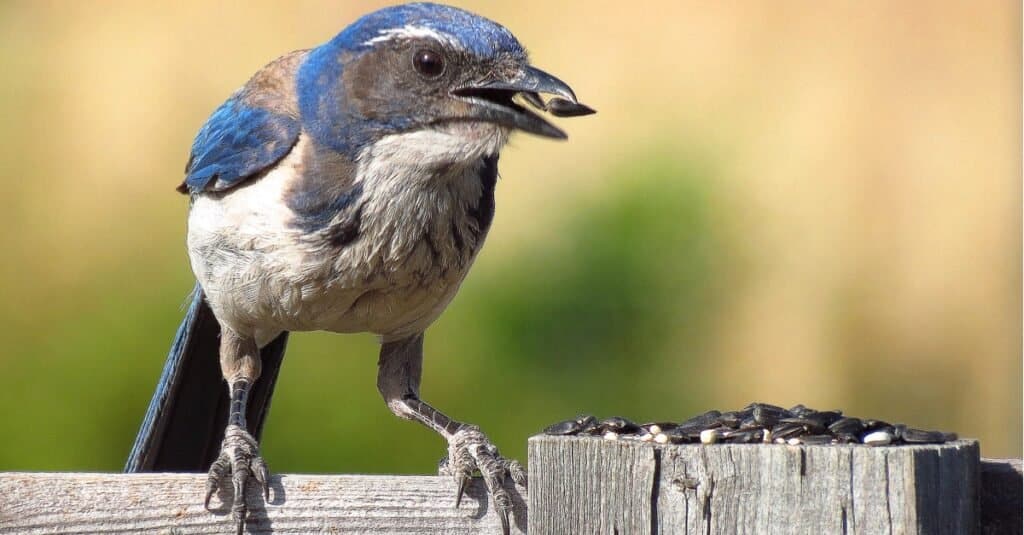
The western scrub jay is also called the California scrub jay, although its range extends beyond the state of California.
©iStock.com/Keppela
Wood Pewee
Two main types of wood pewee exist: the eastern wood pewee and the western wood pewee. The western wood pewee is commonly found in the western portion of North America, including countries like the United States and Canada. On the other hand, the eastern wood pewee sees a smaller distribution, resigned solely to the United States in states like Tennessee and New York. Eastern wood pewees range from 5.3 to 5.9 inches in length and weigh approximately 14 grams. The western wood pewee is slightly larger than its eastern counterpart, measuring between 5.5 and 6.3 inches long but weighing the same as the eastern wood pewee at 14 grams.
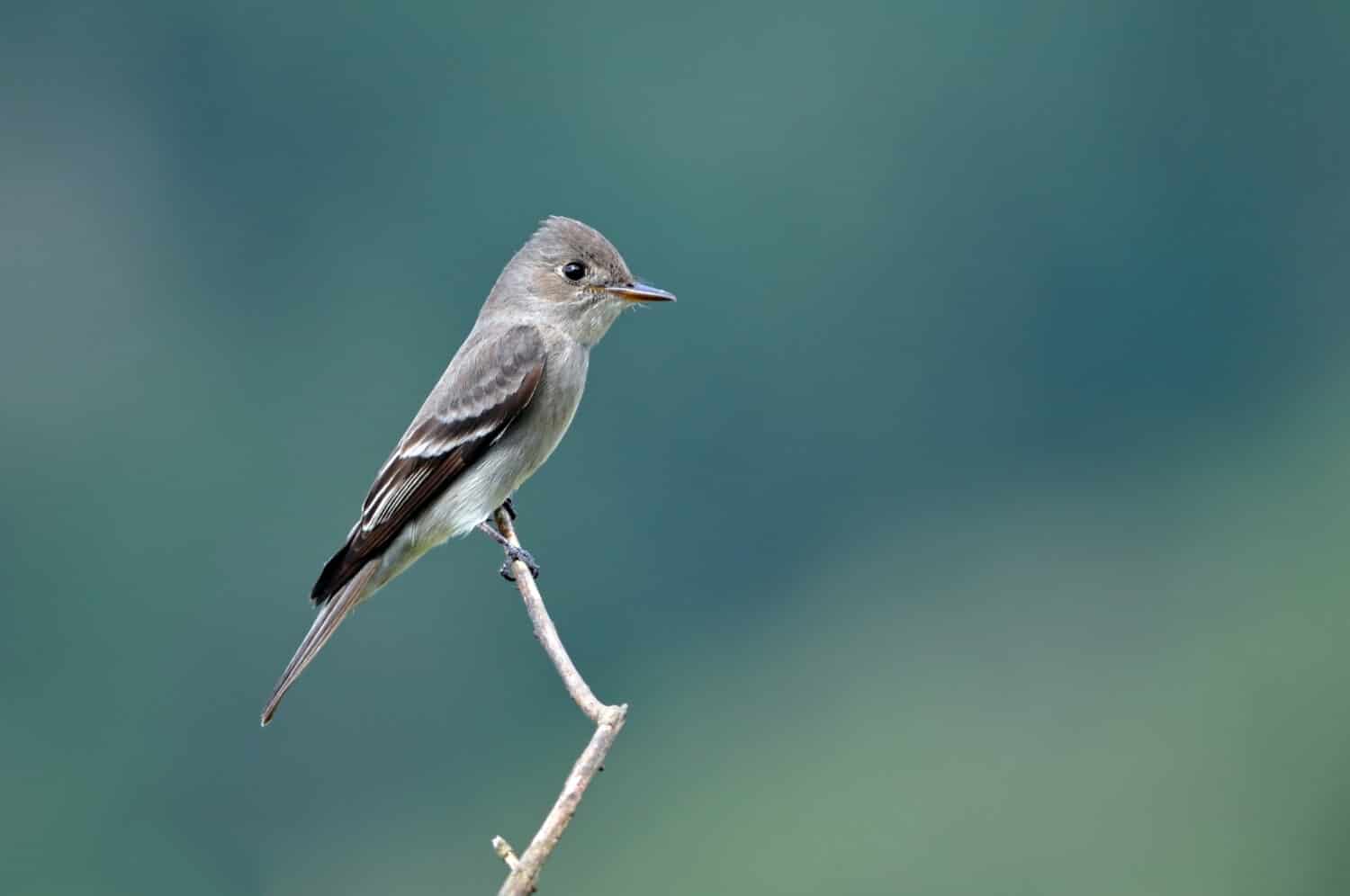
The western wood pewee has a wider distribution than that of the eastern wood pewee.
©Laura Mountainspring/Shutterstock.com
White-chinned Thrush
The white-chinned thrush is also referred to as the white-throated thrush, and this bird resides in Jamaica. Habitats of the white-chinned thrush include wet forests in subtropical or tropical climates. In addition, this species is non-migratory and spends most of its time on the ground. Furthermore, the bird measures between 9.45 and 10.43 inches long with a weight of 82 grams. The conservation status of the white-chinned thrush is listed as of least concern, meaning its population numbers remain stable.
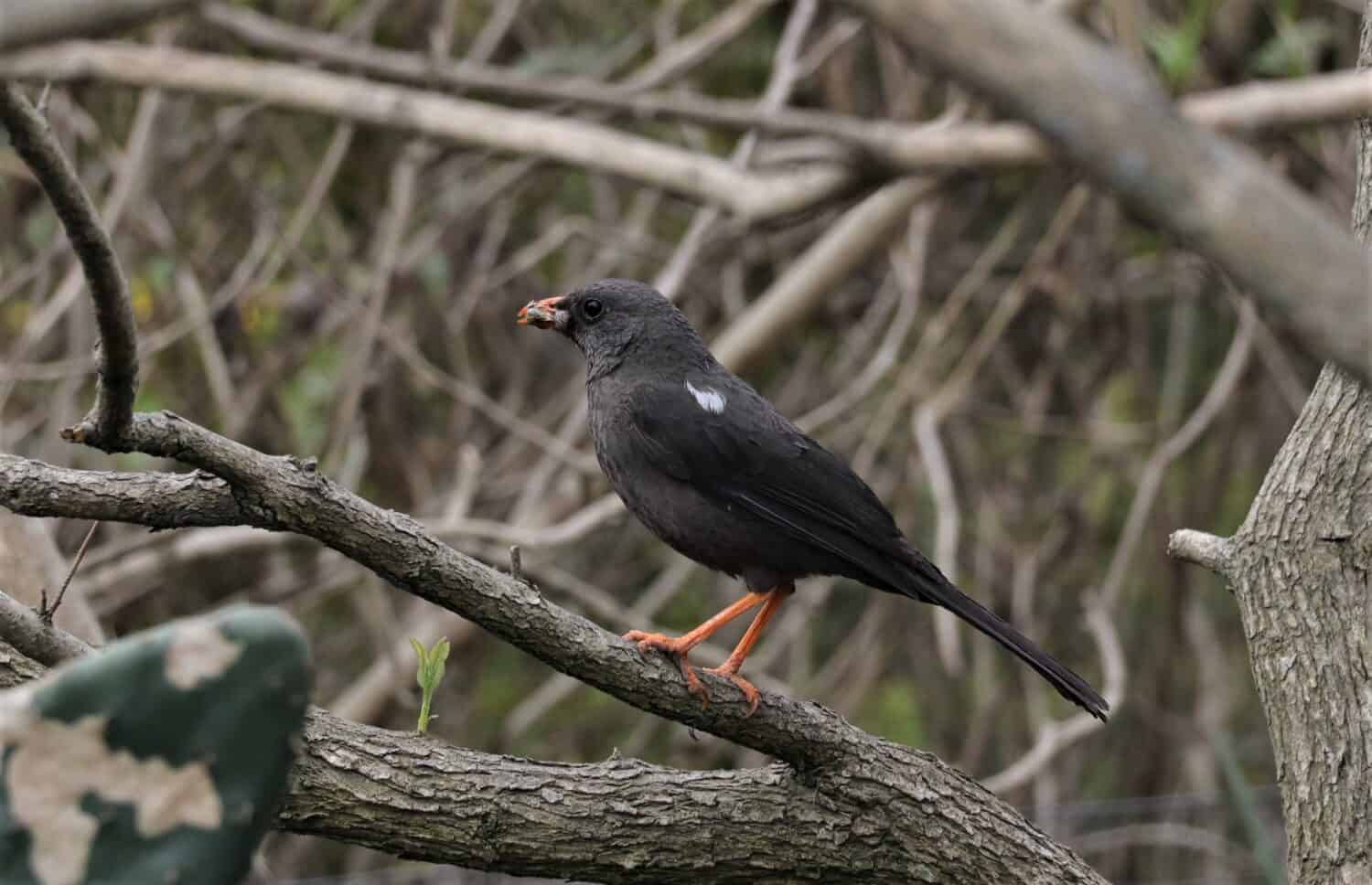
The white-chinned thrush is abundant in Jamaica and prefers tropical climate zones.
©Karel Rasin/Shutterstock.com
That Fastest Bird That Starts With W
The white-throated needletail is the fastest bird that begins with the letter w, achieving a maximum horizontal speed and airspeed of 105 miles per hour. White-throated needletails are primarily found in the country of Australia, specifically along the coast, and they are migratory birds. In addition, the wingspan of this bird species measures nearly 20 inches long, and its powerful wings are what allow it to fly quickly. The appearance of the white-throated needletail is characterized by a dark feather coloration with a white throat.
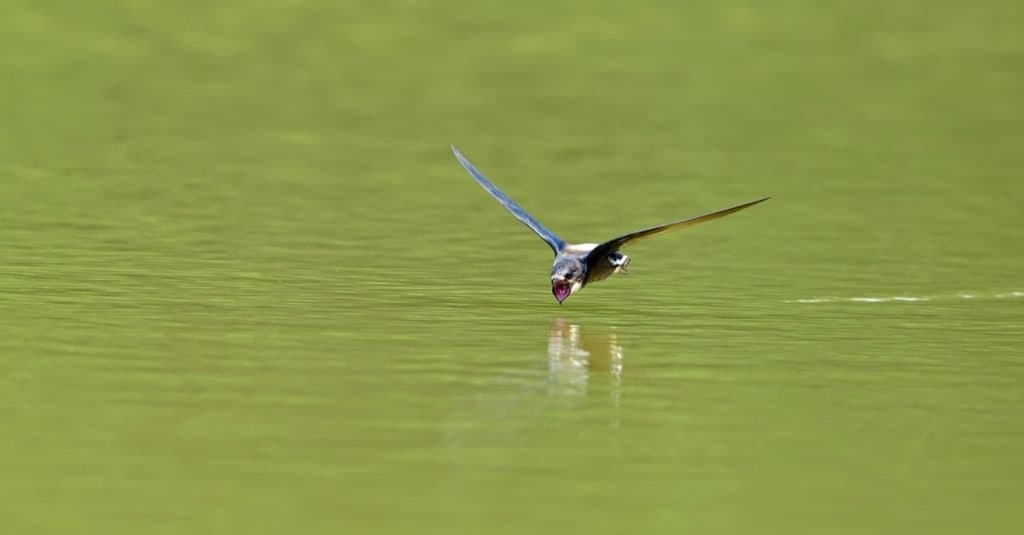
The white-throated needletail may reach speeds up to 105 miles per hour!
©scott mirror/Shutterstock.com
The Smallest Bird That Starts With W
Like the white-throated needletail, the weebill is common in Australia. However, weebills are very small, measuring between 3.1 and 3.5 inches in length and weighing only six grams. In addition, the weebill’s wingspan measures approximately 5.9 inches in length. The habitat of the weebill includes forests or wooded areas, typically eucalyptus forests. Furthermore, the coloration of this bird typically appears as a combination of olive-brown and gray-brown.
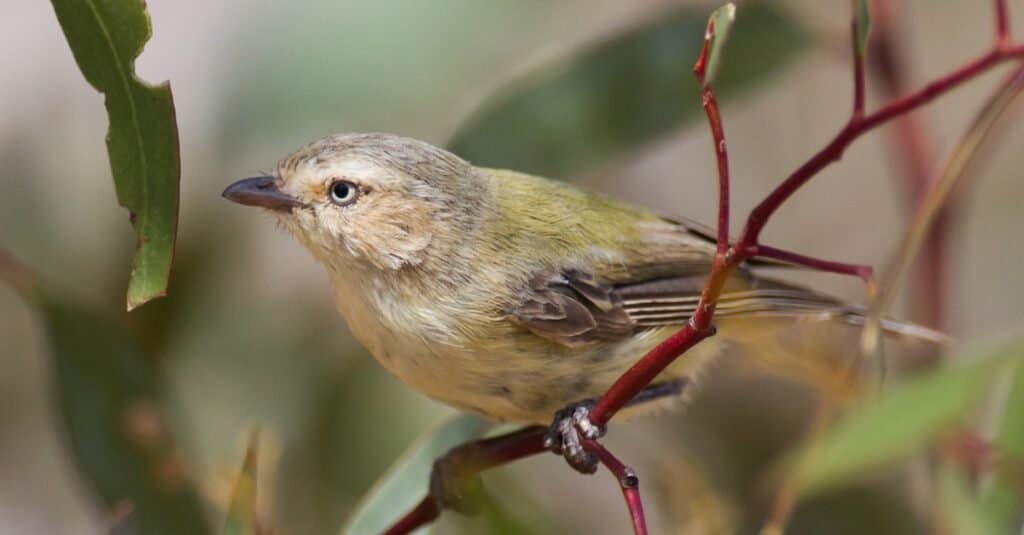
The weebill is not only the smallest bird that starts with W, but it is also the smallest bird in Australia.
©Jukka Jantunen/Shutterstock.com
The Largest Bird That Starts With W
The largest bird species beginning with the letter w is the whooping crane, which stands around five feet tall and weighs between 14 and 16 pounds. In addition, the wingspan of the whooping crane exceeds lengths of seven feet. The whooping crane is the largest bird on the North American continent, and its habitat primarily consists of marshes or wetlands. The whooping crane’s appearance is marked by white plumage with a dark crimson forehead.
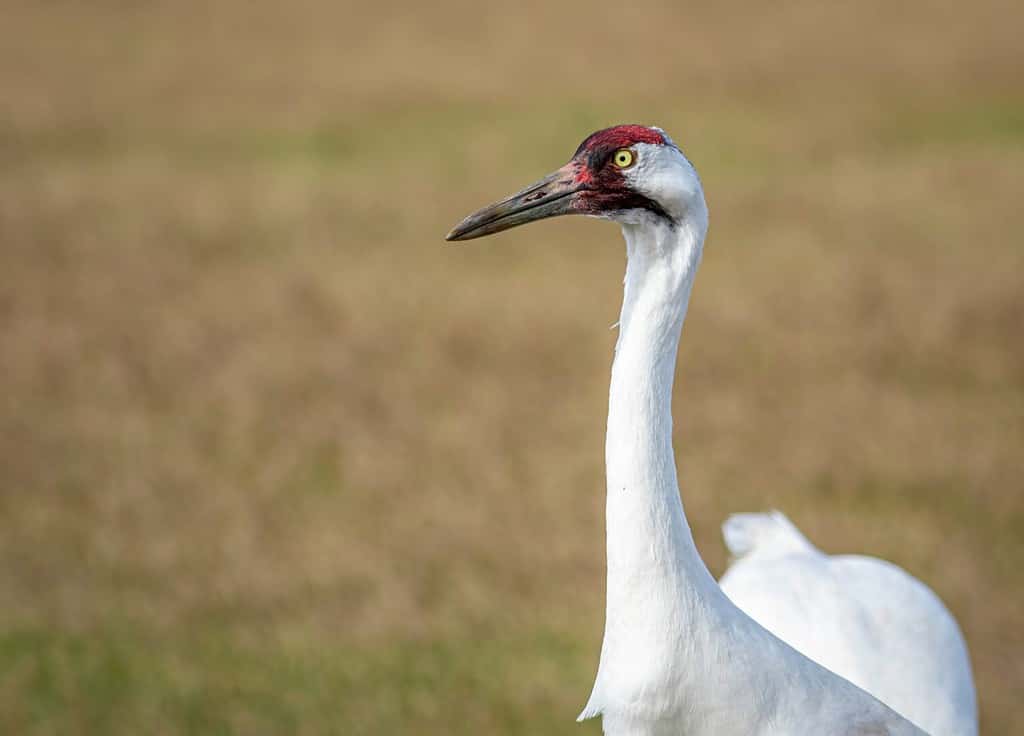
The bright crimson cap of the whooping crane makes this bird easy to spot in the wild.
©Matthew Jolley/Shutterstock.com
Furthermore, two other bird species that start with w compete with the whooping crane in size. The wandering albatross and whooper swan both rival the whooping crane in length, measuring around four feet and five feet, respectively. In addition, the wandering albatross weighs more than the whooping crane at an impressive 35 pounds. The whooper swan, on the other hand, weighs up to 34 pounds. Therefore, while the whooping crane is taller than the wandering albatross and the whooper swan, both bird species weigh more than the whooping crane, making it difficult to determine which bird is the largest.

Some could argue that the wandering albatross is the largest bird that begins with W, as it weighs more than the whooping crane at 35 pounds.
©Imogen Warren/Shutterstock.com

Whooper swans also grow quite large, weighing up to 34 pounds.
©Rishad Allaberdiev/Shutterstock.com
Birds That Start With W: A Summary
| Common Name | Scientific Name |
|---|---|
| White-throated needletail | Hirundapus caudacutus |
| Whooping crane | Grus americana |
| Wandering albatross | Diomedea exulans |
| Whooper swan | Cygnus cygnus |
| Weebill | Smicrornis brevirostris |
| White-chinned thrush | Turdus aurantius |
| Western wood pewee | Contopus sordidulus |
| Eastern wood pewee | Contopus virens |
| Western scrub jay | Aphelocoma californica |
| White-tailed rubythroat | Calliope pectoralis |
| Wood duck | Aix sponsa |
| Wilson’s plover | Charadrius wilsonia |
| Wild turkey | Meleagris gallopavo |
| White-tailed hawk | Geranoaetus albicaudatus |
The photo featured at the top of this post is © GTS Productions/Shutterstock.com
Thank you for reading! Have some feedback for us? Contact the AZ Animals editorial team.






